Alpe d’Huez
The first ever Tour de France mountain stage finish.
Words and pictues by Cycling Legends
Words and pictues by Cycling Legends
“The Alpe! It’s like all the Alps in one mountain,” says Gérard Ejnès, L’Equipe journalist and author, and he’s right. The tick-tock rhythm of its 21 bends, the regularity of its straights, one piled on top of the other, is typical of many Alpine roads where engineers use heavy construction to tame nature.
But what they made with the road to Alpe d’Huez was a 13-kilometre uphill race track set in a giant natural stadium. A perfect theatre for the Tour de France. Riders enter at the bottom, fight metre for metre up its slopes, cheered all the way by upwards of 300,000 spectators.
Then, in the Tour de France’s image, every day the climb is open enthusiastic amateurs test themselves on the Alpe.
Alpe d’Huez is the name of the ski resort that sits at the lip of a bowl of rock carved out of the Grandes-Rousses by an ancient glacier. Alpe d’Huez the climb is the road that links Bourg d’Oisans, a town in the Romanche valley, with the ski resort.
Then, in the Tour de France’s image, every day the climb is open enthusiastic amateurs test themselves on the Alpe.
Alpe d’Huez is the name of the ski resort that sits at the lip of a bowl of rock carved out of the Grandes-Rousses by an ancient glacier. Alpe d’Huez the climb is the road that links Bourg d’Oisans, a town in the Romanche valley, with the ski resort.
The road snakes up within a straight plane. In Alpe d’Huez you look straight down on Bourg d’Oisans, and from Bourg d’Oisans you look straight up at Alpe d’Huez. And that fact inspired a local artist called Jean Barbaglia. He was the first to visualize a bike race on Alpe d’Huez.
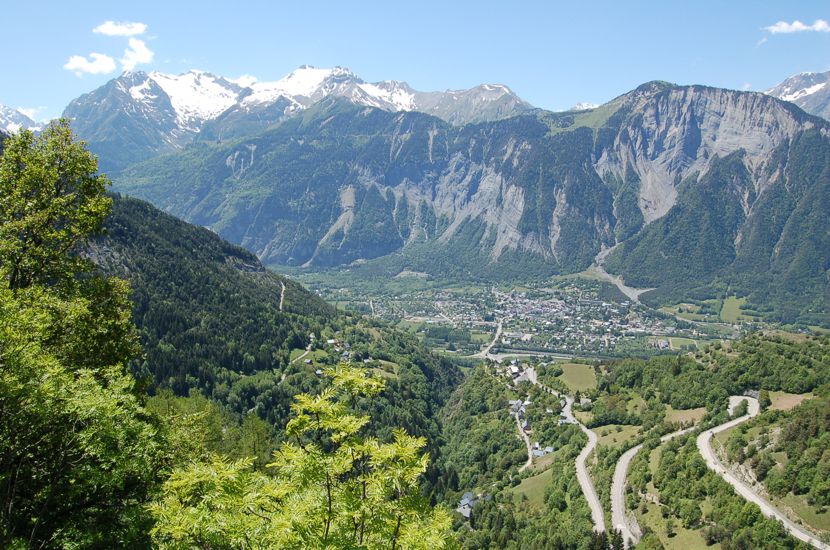

Story of a stage
Barbaglia visited Georges Rajon who owned the biggest hotel in the resort, the Christina, and suggested that Alpe d’Huez was the ideal place for a Tour de France stage finish. Rajon agreed, it would do his business good to have the Tour there, but there had never been a mountain stage finish before. Luckily Rajon was persuasive, he presented a good case to the organisers and they agreed to hold their first-ever mountain finish on Alpe d’Huez in 1952.
On a sporting level it was a success. The terrain provoked virtuoso performances from two contrasting figures. The elegance and sheer class of Fausto Coppi won the day, beating the stubborn belligerence of Jean Robic. The rest were a long way behind.
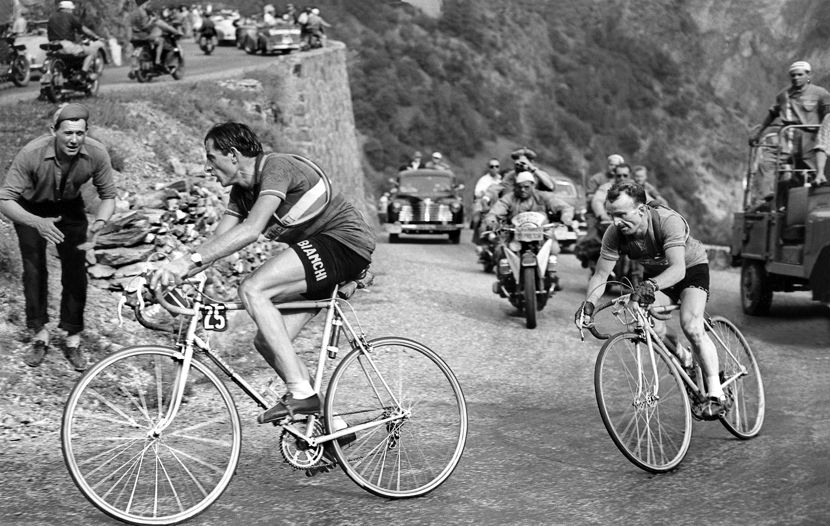
On a sporting level it was a success. The terrain provoked virtuoso performances from two contrasting figures. The elegance and sheer class of Fausto Coppi won the day, beating the stubborn belligerence of Jean Robic. The rest were a long way behind.

But the Tour was uconvinced. A mountain finish requires extra work, lots of extra work, and Alpe d’Huez was nowhere near as developed as it is today. Plus the black and white photos like the one above show few people on the slopes of what is now the busiest mountain climb in cycling. Neither the Tour nor any other race hurried back, their unwillingness didn’t deter Monsieur Rajon.
He nagged and nagged at the Tour organisers and they finally relented in 1976. What they saw then was unrecognizable to anyone who’d seen Alpe d’Huez in the 1950s. It was a highly developed ski resort with big hotels and lots of investment. The Tour’s return was more than a logistic success, it gave birth to a legend that secured Alpe d’Huez’s place in cycling forever.
Dutch mountain
The legend has it roots in a coincidence between two Dutchmen. The first, Father Jaap Reuten, visited Alpe d’Huez as an enthusiastic skier in 1964 and was horrified to find that there was no church in what was then a growing village. He loved the place, so he applied to be the parish priest, having convinced the Catholic authorities he would build a church there.
He raised the money by any means he could, including acting as the local agent for a Dutch beer company for a while, and commissioned the French architect Jean Marol to design a church. Marol came up with a beautiful fusion of wood and concrete to represent old mixed with new, which was central to Father Jaap’s concept of a place where villagers and visitors would worship together. Notre Dame des Neiges was opened in 1969.
The coincidence occurred when the Tour de France returned to Alpe d’Huez in 1976, and a Dutchman, Joop Zoetemelk won the stage. Father Jaap rang the church bells in celebration and the press loved it. They loved it again when Hennie Kuiper (below) won the following year, and Father Jaap rang the bells again. He kept on ringing them as Dutch riders won six of the next 11 stages finishing on Alpe d’Huez.
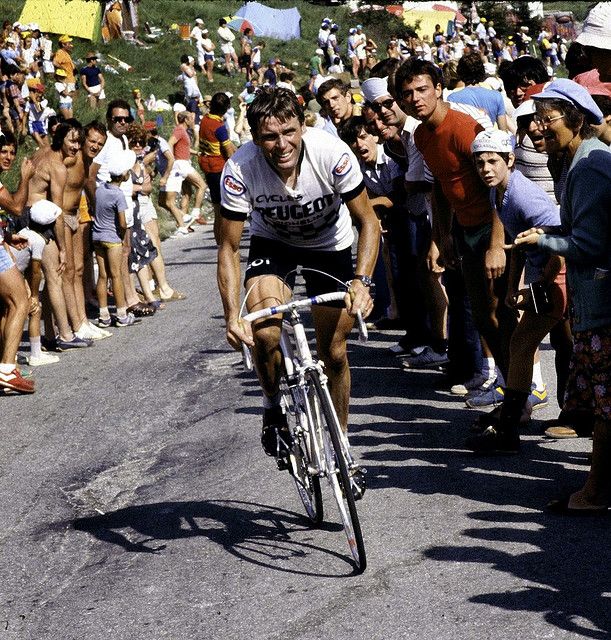

The legend of Dutch mountain was born. The radio commentator and former pro Harrie Janssen isn’t exaggerating when he says; “For a while for Dutch sponsors, fans and for Dutch riders victory at Alpe d’Huez was more important than the world championships. Before Zoetemelk won Dutch fans favoured the Bordeaux wine regions to visit and cheer on their cycling heroes, then it was Alpe d’Huez and they came in their thousands.”
The unlikely run of men from the low flat lands of Holland winning the most important mountain stage of the Tour de France ended with Gert-Jan Theunisse in 1989, and a Dutchman hasn’t won since. But Dutch bike fans still congregate around Huez village, about two thirds up. They park their camper vans days before the stage, they barbeque, they drink beer, they talk about the glory days and they call their place Dutch Corner. There are corners taken by nations all the way up theAlpe now. Watch out for bend 14 this, which it’s rumoured to be the destination of a Welsh fan group called the Tafia.
The climb
The climb of Alpe d’Huez begins on the edge of Bourg d’Oisans. Take the N91 to Briançon and just after crossing a bridge over the Romanche you go left at a very tight right -hand bend in the main road. There are a few hundred metres of flat, then where the houses of Bourg d’Oisans end the climb begins.
The climb of Alpe d’Huez begins on the edge of Bourg d’Oisans. Take the N91 to Briançon and just after crossing a bridge over the Romanche you go left at a very tight right -hand bend in the main road. There are a few hundred metres of flat, then where the houses of Bourg d’Oisans end the climb begins.
Alpe d’Huez is hard from the start, the road tips up at ten percent and stays there for the first three kilometres as you encounter the first of its 21 hairpin bends. Numbered signs count them down, each sign carrying its elevation and the name of an Alpe d’Huez stage winner. They make interesting reading.
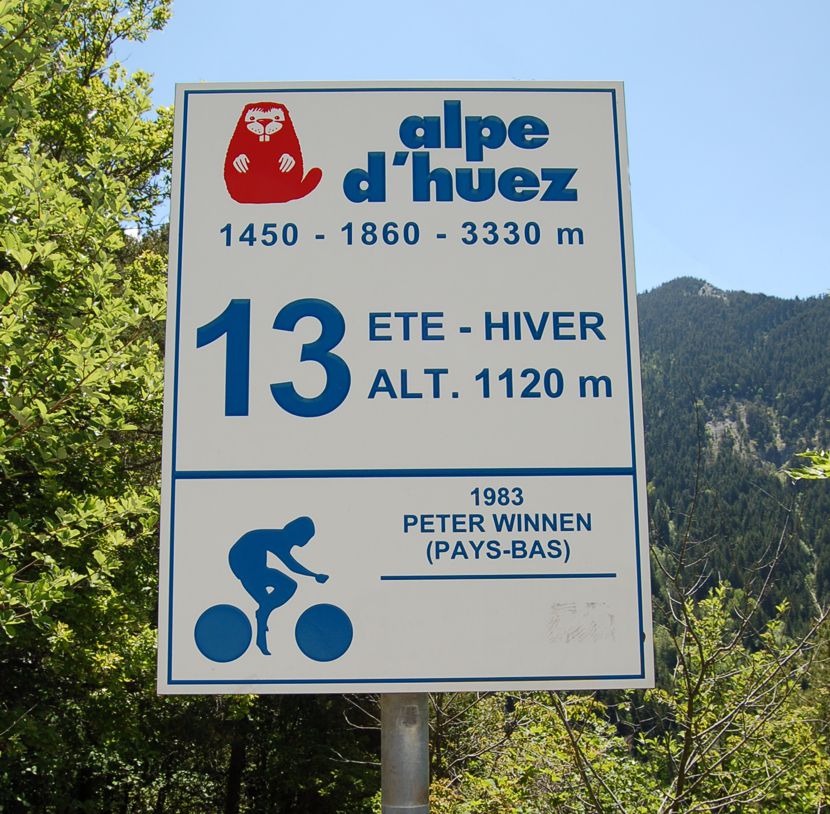

The gradient relents slightly at La Garde, where the first pitch, a ferociously steep rock face with the road carved out of it, ends. From La Garde you climb up an open meadow, then the road slaloms between the sparse trees of Bois Charretier.
And on and up it goes. sometimes sheltered, sometimes exposed to the sun. The climb follows the steep-sided Sarenne valley for much of its way. The valley was cut by water from the Sarenne glacier, which although much smaller now still clings to the side of a mountain called Pic du Lac Blanc. It’s cool and airy up where the glacier sits, but the high sides of its south-facing valley seal the climb from any cooling breezes, while the sun beats down mercilessly. Summer heat on Alpe d’Huez is ferocious
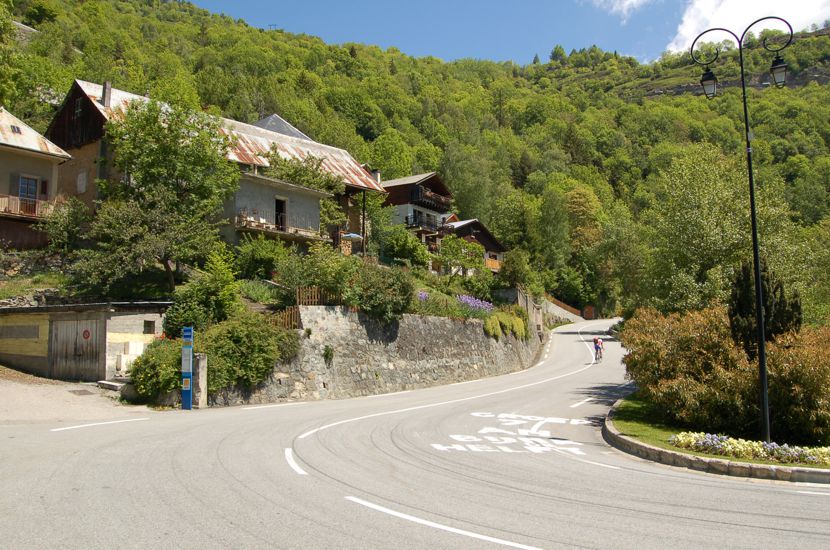
And on and up it goes. sometimes sheltered, sometimes exposed to the sun. The climb follows the steep-sided Sarenne valley for much of its way. The valley was cut by water from the Sarenne glacier, which although much smaller now still clings to the side of a mountain called Pic du Lac Blanc. It’s cool and airy up where the glacier sits, but the high sides of its south-facing valley seal the climb from any cooling breezes, while the sun beats down mercilessly. Summer heat on Alpe d’Huez is ferocious

Hennie Kuiper, who won stages on Alpe d’Huez in the 1977 and 1978, says; “It is an incredibly hot place. The sun shines on Alpe d’Huez almost all day. It’s on your back in the afternoon when it’s at its hottest, when the Tour de France always gets there. I remember being so hot racing up the Alpe that I kept looking ahead and willing for patches of shadow to come.”
Bend by bend the kilometres click down, the gradient stays between 7.5 and 9.5 percent until a short stretch of 6.5 at Huez. This respite is paid for when the road suddenly tilts up to 11.5 percent, a last punch in the gut. Alpe d’Huez is like being turned on spit while being stabbed with fork. Another Dutch double winner, Peter Winnen said after his first victory, “I felt like the climb took five years off my life.”
Eventually the straights become longer and the gradient shallow. The mountain opens up and the ski resort finish comes into view. A few zigs and zags and there’s the stage finish on the Avenue de Rif Nel, right outside the Hotel Chaix.
This is the end if you only ride the Tour climb, but you’ll be missing a treat if you do because there’s so much more. It’s possible to continue through Alpe d’Huez resort and take on a further eight lonely kilometres up to the Col de Sarenne. It’s a wonderful ride, a spectacular continuation of the Alpe with incredible views but nowhere near as busy.
The Tour de France did it once so far, in 2013 when the race climbed Alpe d’Huez then continued over the Col de Sarenne, followed its descent back into the Romanche valley, then climbed Alpe d’Huez for a second time.
The Tour de France did it once so far, in 2013 when the race climbed Alpe d’Huez then continued over the Col de Sarenne, followed its descent back into the Romanche valley, then climbed Alpe d’Huez for a second time.
Not many do the extra bit though. They ride to the stage finish and that’s it, Alpe d’Huez has been bagged. All day they go up and down, each rider in their own private world, doing their own individual test, counting down the 21 bends and counting down their time. A ramp test on tarmac. A rite of passage. One off the bucket list. That’s Alpe d’Huez; those bends, the clock, the bike; they were made for each other.
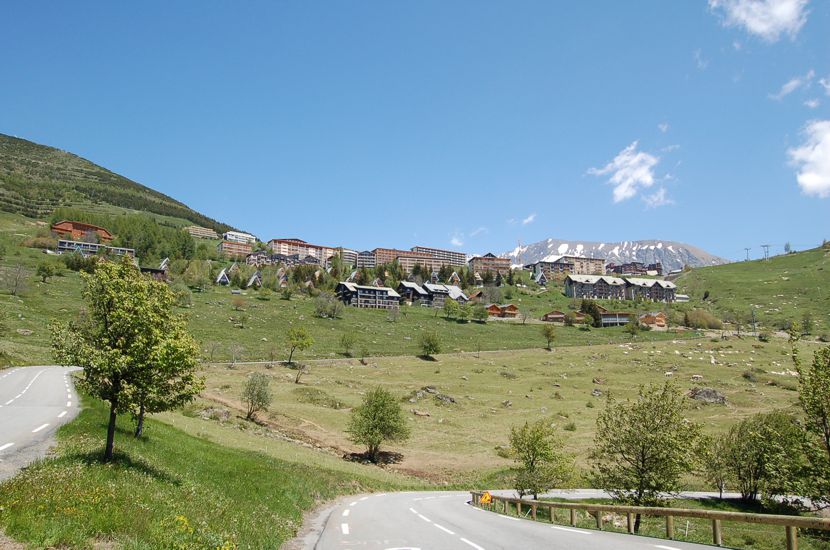
A



